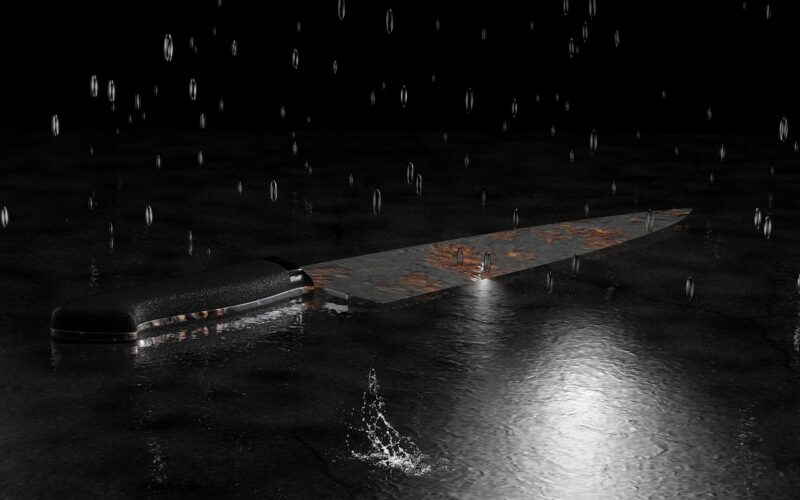How the FBI Used Profiling to Catch Some of America’s Most Notorious Criminals
November 15, 2024

The Federal Bureau of Investigation (FBI) has long been at the forefront of law enforcement in the United States, tackling some of the most heinous crimes and notorious criminals in American history. One of the most innovative techniques employed by the FBI to ensure public safety is criminal profiling. This psychological tool seeks to identify the traits and behaviors of criminals to predict their actions, ultimately leading to their apprehension. In this article, we will delve into the fascinating world of criminal profiling and how the FBI used this technique to catch some of America’s most notorious criminals.
1. Understanding Criminal Profiling
Criminal profiling, also known as behavioral profiling, is the process of analyzing criminal behavior in order to create a psychological portrait of the perpetrator. This can include their age, gender, economic status, lifestyle, and possible motivations. Profilers analyze crime scenes, patterns, and victimology to derive insights into the criminal’s identity and potential motives.
The origins of criminal profiling can be traced back to the early 20th century, but it gained significant traction during the 1970s when the FBI began formalizing its approach. The Behavioral Science Unit (BSU) was established to study active psychological patterns of criminals and to assist in investigations with insights founded on forensic and psychological principles.
2. The Evolution of Profiling at the FBI
The FBI’s profiling techniques evolved significantly from its inception through the late 20th century. Early profiling efforts were mostly intuitive, based on the personal experiences and observations of investigators. However, the groundbreaking work of agents like John E. Douglas, who was pivotal in developing modern techniques, transformed the field.
Douglas and his colleagues conducted extensive interviews with serial killers and violent offenders to understand their motivations and psychological states. This research led to a more structured methodology known as the “criminal profile,” which includes:
- Crime Scene Analysis: Interpreting the physical location and contents of a crime scene to gauge the characteristics of the offender.
- Victimology: Studying the victims’ lives and relationships to determine potential connections to the perpetrator.
- Behavioral Patterns: Analyzing the methodology and psychology of the criminal’s actions to highlight patterns for identification.
Combining these elements made profiling a crucial aspect of the FBI’s investigative tactics, allowing agents to narrow down suspects based on distinct behavioral traits.
3. Famous Cases Solved with Profiling
Profiling has played a vital role in several high-profile cases throughout U.S. history. Here are a few notable examples where the FBI utilized profiling to apprehend dangerous criminals:
3.1 The Capture of the Unabomber
The Unabomber, Ted Kaczynski, terrorized the United States from 1978 to 1995 by sending letter bombs to various individuals. The FBI utilized a profile to narrow down their list of suspects, focusing on individuals with backgrounds in mathematics and engineering who lived in remote locations. Not only did they analyze bomb-making techniques, but they also scrutinized Kaczynski’s writings, which provided vital insights into his motivations and mindset. The FBI’s profiling efforts led to the creation of a profile that closely matched Kaczynski, ultimately resulting in his capture after his brother recognized his writing style in a published manifesto.
3.2 The BTK Killer
Dennis Rader, the infamous BTK killer (Bind, Torture, Kill), evaded law enforcement for decades, committing 10 murders from 1974 to 1991. The FBI utilized behavioral analysis to understand his patterns, leading to the identification of traits associated with Rader’s modus operandi. In 2005, Rader resumed sending letters to the media, which helped the FBI compile additional evidence against him. Profiling techniques allowed authorities to discern his psychological needs and ultimately contributed to his capture, showcasing the effectiveness of criminal profiling in understanding deeply disturbed individuals.
4. How Profiling Works in Practice
Profiling involves several practical steps that FBI agents follow when they assess a crime scene:
4.1 Crime Scene Investigation
Upon the discovery of a crime, investigators meticulously analyze the scene for clues. This includes examining the bodies, weapons, and any potential evidence that could point toward the offender’s identity.
4.2 Behavior Analysis
Agents evaluate how the crime was executed, particularly looking at the organization level (planned vs. impulsive) and aggression levels (sadistic vs. non-sadistic). By understanding these dynamics, the profiler can formulate assumptions about the criminal’s psychology.
4.3 Creating a Profile
After collecting enough evidence, profilers piece together various traits including age range, possible occupations, social status, geographic location, and behavioral tendencies. Profilers then present this information to law enforcement as a guideline for potential suspects.
Through these steps, profiling provides critical support in identifying and apprehending criminal offenders.
5. The Limitations and Ethical Concerns of Profiling
While profiling has proven to be a helpful tool in catching criminals, it is not without its limitations and criticisms. Some challenges include:
- Over-Reliance on Stereotypes: Profilers run the risk of relying on stereotypes or biases that could lead to misidentification of suspects, especially concerning race and gender, potentially leading to wrongful accusations.
- Lack of Predictive Accuracy: Criminal behavior can be erratic and unpredictable, making profiling less reliable in certain cases. Not all criminals fit neatly into established profiles, which can lead to investigative misdirections.
- Ethical Dilemmas: The use of profiling raises ethical concerns, particularly when individuals are profiled solely based on characteristics deemed suspicious rather than actual evidence of wrongdoing. This raises issues of discrimination and civil liberties violations.
As profiling continues to evolve, the FBI is committed to fostering a dialogue about its ethical applications while refining its methodologies to increase accuracy.
6. The Future of Criminal Profiling
With advancements in technology and research, the future of criminal profiling looks promising. The integration of artificial intelligence and machine learning is poised to revolutionize the profiling process. Technologies that analyze vast amounts of data quickly can assist in identifying patterns that human agents may overlook.
Moreover, as psychological research continues to expand, new insights into behavioral patterns will enhance profiling accuracy, making it an even more powerful tool in combatting crime. Collaboration between law enforcement and mental health professionals may also pave the way for improved profiling techniques.
Conclusion
Criminal profiling has undoubtedly played a critical role in the FBI’s efforts to catch some of America’s most notorious criminals. This unique combination of psychology and investigative skill has helped law enforcement more accurately and efficiently track down those who threaten public safety. As profiling continues to evolve, it holds the potential to further aid investigations and support the mission of securing a safer society for all.
Understanding its nuances, ethical implications, and future advancements will allow us to appreciate how powerful a tool profiling can be in the relentless pursuit of justice.








